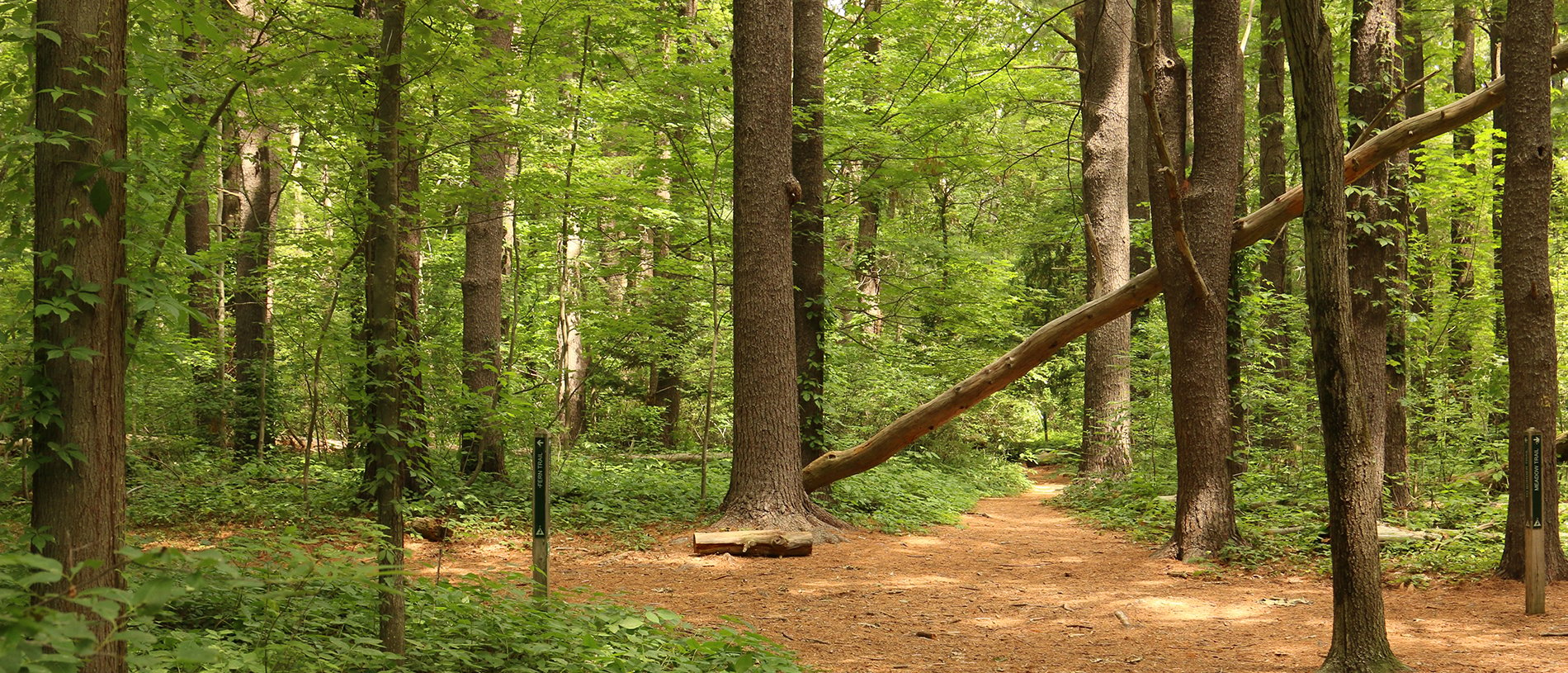Find a Bird
Saltmarsh Sparrow
Ammospiza caudacuta
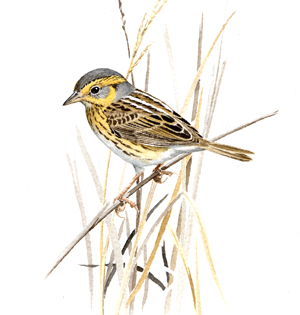
Local and likely increasing
State Wildlife Action Plan listed

“The nests were all built among the stems of short, upright grasses, their bottoms 2 or 3 inches above the ground, which was wet and shiny but in no instance actually covered with water.” – William Brewster, in Arthur Cleveland Bent’s Life Histories of North American Birds
The Saltmarsh Sparrow, one of our most beautiful breeding sparrows, is a quiet and reclusive “mouse” of the state’s salt marshes. Despite their low profile, these sparrows rely on the salt marshes of Massachusetts for a considerable portion of their global breeding habitat. As a result of having a small global breeding range, relying on a dynamic breeding habitat, and nesting within inches of the high-tide mark, this species is predicted to be one of the early casualties of sea-level rise brought on by climate change. Also, they use large salt marshes for breeding, and fragmentation of marsh areas, as well as introduced vegetation, can exclude them from breeding. However, in the face of these likely future challenges, the species appears to be thriving in the Bay State currently.
Historic Status
William Peabody had little to say about the Sharp-tailed Finch (as he knew the Saltmarsh Sparrow) in his nineteenth-century report to the state, when he wrote nothing more than, “The Sharp-tailed Finch…is added, at the suggestion of Dr. Brewer, on the authority of Nuttall,” (Peabody 1839). The decidedly dedicated coast-dwelling Saltmarsh Sparrow kept its distance from all except for those who ventured directly into its specific habitat. Henry Davis Minot proclaimed, “They are already very rare in this State, and, I fear, will be soon exterminated here, as, from their scarcity, they are unwisely persecuted every year by enterprising naturalists,” (Minot 1877). Fortunately, Minot overexaggerated the rarity of this species, and William Brewster actually corrected Minot’s description in a footnote in a later edition of the book. As the twentieth century dawned, strong enough breeding populations at the mouth of the Charles River and at other points existed for the bird to be termed “locally common” (Howe & Allen 1901).
Atlas 1 Distribution
Predictably, Saltmarsh Sparrows were found in Atlas 1 breeding in salt marshes along the coast and nowhere else. The sprawling saline wetlands of coastal Essex County were a haven for loosely associated communities of breeding pairs of Saltmarsh Sparrows. No doubt the presence of breeding Saltmarsh Sparrows in the Boston Basin stood as heartening proof of at least some intact habitat remaining near one of the nation’s oldest cities. The southern coast of the Bristol/Narragansett Lowlands was a hotbed of breeding activity, with only a small handful of surveyed coastal blocks failing to house Saltmarsh Sparrows. As with many coastal breeding species, the Cape and Islands accounted for the bulk of Massachusetts Saltmarsh Sparrow breeding locations, with particular aggregations on the Cape Cod National Seashore, at Monomoy, and on Nantucket.
Atlas 2 Distribution and Change
In every ecoregion where the Saltmarsh Sparrow bred in Atlas 1 there was growth in Atlas 2, even if the growth was minor in scope. Even Essex County's salt marshes proved to be slightly more popular with these sparrows than they were in Atlas 1, as did the salt marshes in the Bristol/Narragansett Lowlands. The Boston Basin also tripled its number of occupied blocks; however, the region showing the greatest increase was Cape Cod and the Islands. Saltmarsh Sparrows solidified their holdings on the Outer Cape and Martha's Vineyard, and expanded their presence on Nantucket. The most notable gap on the map occurred on the South Shore, where the species vanished from Duxbury, thus leaving a wide unoccupied area between Quincy and Cape Cod.
Atlas 1 Map
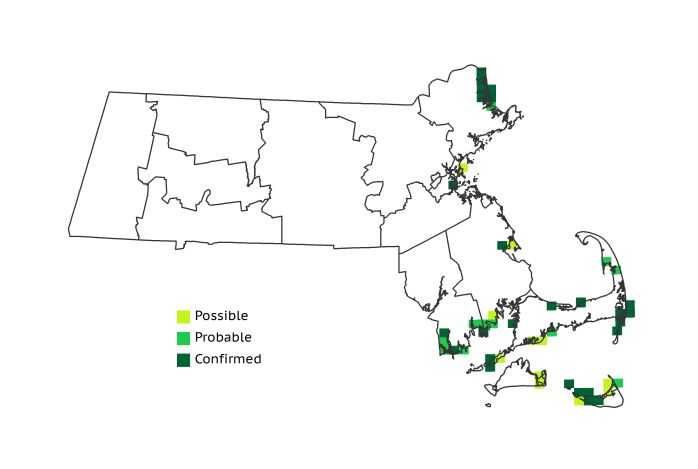
Atlas 2 Map
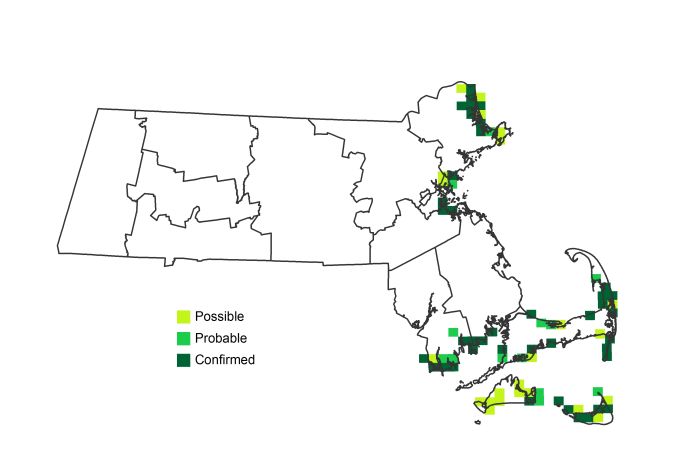
Atlas Change Map
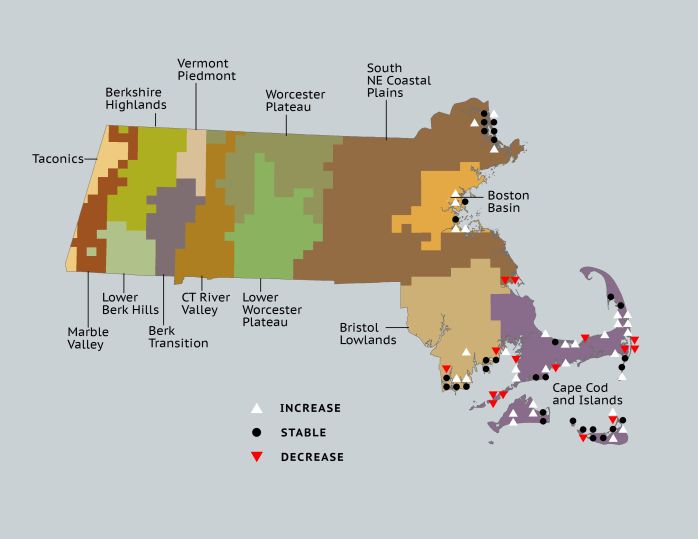
Ecoregion Data
Atlas 1 | Atlas 2 | Change | ||||||
Ecoregion | # Blocks | % Blocks | % of Range | # Blocks | % Blocks | % of Range | Change in # Blocks | Change in % Blocks |
Taconic Mountains | 0 | 0.0 | 0.0 | 0 | 0.0 | 0.0 | 0 | 0.0 |
Marble Valleys/Housatonic Valley | 0 | 0.0 | 0.0 | 0 | 0.0 | 0.0 | 0 | 0.0 |
Berkshire Highlands | 0 | 0.0 | 0.0 | 0 | 0.0 | 0.0 | 0 | 0.0 |
Lower Berkshire Hills | 0 | 0.0 | 0.0 | 0 | 0.0 | 0.0 | 0 | 0.0 |
Vermont Piedmont | 0 | 0.0 | 0.0 | 0 | 0.0 | 0.0 | 0 | 0.0 |
Berkshire Transition | 0 | 0.0 | 0.0 | 0 | 0.0 | 0.0 | 0 | 0.0 |
Connecticut River Valley | 0 | 0.0 | 0.0 | 0 | 0.0 | 0.0 | 0 | 0.0 |
Worcester Plateau | 0 | 0.0 | 0.0 | 0 | 0.0 | 0.0 | 0 | 0.0 |
Lower Worcester Plateau | 0 | 0.0 | 0.0 | 0 | 0.0 | 0.0 | 0 | 0.0 |
S. New England Coastal Plains and Hills | 9 | 3.3 | 18.8 | 14 | 4.9 | 18.2 | 1 | 0.4 |
Boston Basin | 2 | 3.6 | 4.2 | 7 | 12.5 | 9.1 | 4 | 7.3 |
Bristol and Narragansett Lowlands | 10 | 9.4 | 20.8 | 13 | 11.4 | 16.9 | 2 | 2.0 |
Cape Cod and Islands | 27 | 19.9 | 56.3 | 43 | 29.9 | 55.8 | 11 | 9.2 |
Statewide Total | 48 | 5.0 | 100.0 | 77 | 7.4 | 100.0 | 18 | 2.2 |
Notes
A large percentage of the worldwide breeding population for this species nests in Massachusetts. As such, we have a great responsibility to understand the challenges this species faces, and to take appropriate actions to ensure adequate nesting habitat. Our failure to ensure appropriate acreage of salt marshes as sea-level rise claims habitat will play out with many other species as well, but this bird presents the feathered face of what will likely be a first casualty of this predicted calamity.



